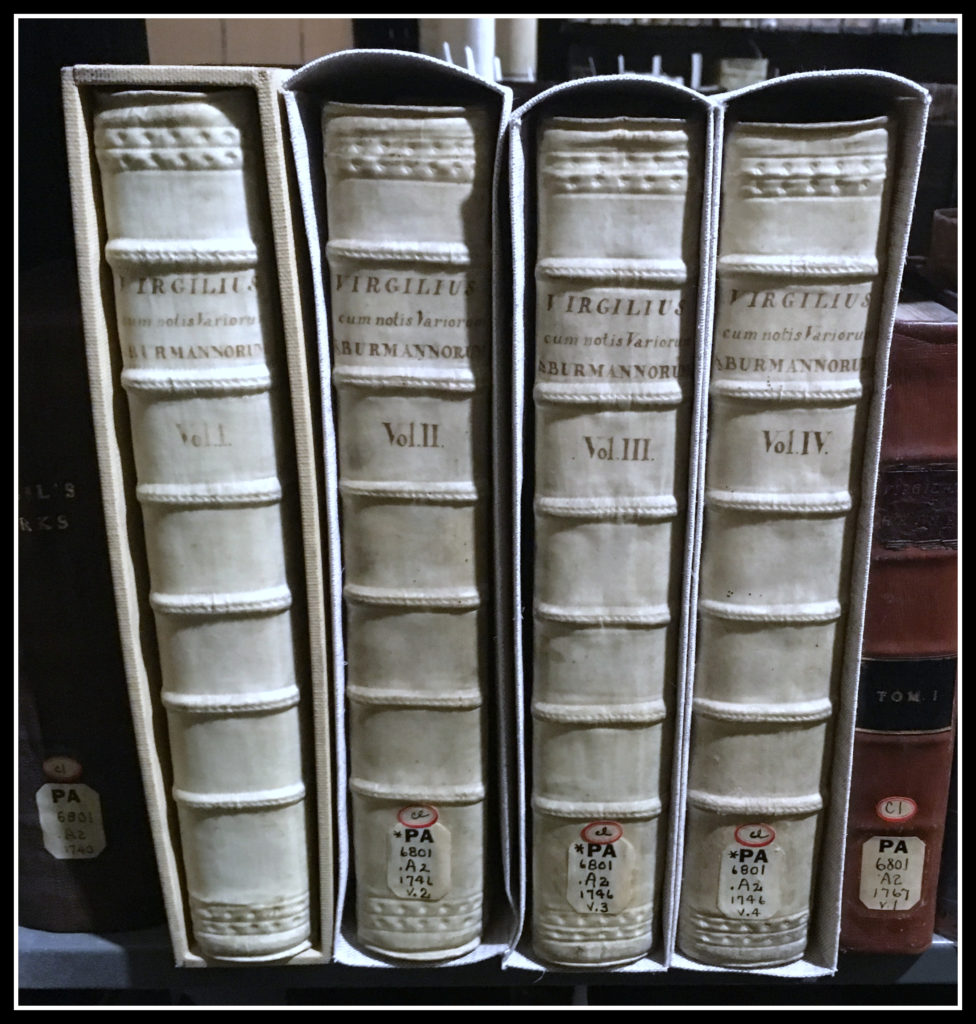Slipcase Race
One of the Lab’s big projects recently has been to help the University of Cincinnati’s Classics Library with preparations for a move of a large section of their collection’s rare books. Moves like this are a great opportunity to assess the condition of a collection, and to provide enclosures for more vulnerable materials so they are protected in transit and beyond. In this particular case the Librarian also requested the lab maintain visibility of the original books as much as possible.
There are quite a few vellum books in the Classics Library collection. Vellum bindings are generally pretty sturdy, but may become brittle over time. They can also expand and contract quite a bit more than other types of bindings, depending on the relative humidity where they are stored. The Image Permanence Institute at the Rochester Institute of Technology has a fun time-lapse video demonstrating this effect – the book looks as if it’s haunted! Given time this expansion and contraction can cause distortion.
Hard-sided slipcases do make it possible to protect most of a book while keeping its spine decoration and information visible, but they are not generally a preservation go-to. They can abrade the edges and covers when pulling the book in and out, and they don’t usually hold up over time because it can be difficult to insert fingers around the book to pull it out if the case is tight, resulting in a broken box or, alternatively, damaged endcaps.
A soft-sided slipcase can work well for vellum-bound books. The vellum is smooth, so abrasion is not a concern. The flexible sides give a little when reaching fingers in to remove a book, so the box won’t eventually fail and there is no need to grab the book from its endcap, damaging it. The cloth allows the book to breathe and flex somewhat, while at the same time preventing it from expanding too far at the fore edge, and squeezing its neighbors.
With a deadline looming we needed to figure out a way to produce soft-sided slipcases quickly and easily. Our solution was to create a template in an Excel spreadsheet, allowing us to simply plug in the book’s measurements and know exactly what size to cut the cloth and where the creases need to be, without needing to have the book handy.
We measured several books where they were, then took the measurements back to the Lab, where we used the spreadsheet to make a handful of slipcases. I was holding my breath when the time came to unite them with their books. Much to my relief they fit perfectly!
Check out this picture showing 4 vellum books – the one on the left was already housed in a hard-sided, cloth-covered, board slipcase, while the 3 on the right are in the brand new soft-sided cloth slipcases. The books are protected, but the spines are still visible. Win, win.

Now that we know it works it’s time to go ahead and make the rest of them!
We’d like to share the Excel spreadsheet used to create these slipcases – Soft-Sided_Slipcase_template. Try it out and let us know what you think!
Veronica Sorcher (PLCH) – Conservation Technician
